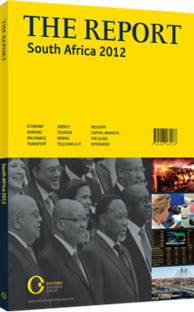Sanlam Group: Life assurance
THE COMPANY: At nearly 100 years old, Sanlam Group Limited is one of the oldest and largest non-banking financial institutions in South Africa. Founded as a mutual assurance company in 1918, Sanlam today manages 16% (second only to Old Mutual at 27%) of the life insurance industry total assets and writes approximately 12.5% of the South African life industry premiums (in 2010). Sanlam owns around 60% of South Africa’s largest short-term insurer, Santam. While this operation has made sizeable contributions to profitability in recent years, life insurance and savings business remain at the core of Sanlam’s operations.
Sanlam listed in 1998 (post-demutualisation) and gained 2.2m shareholders. Today, more than 500,000 private individuals (about 20% of share capital in 2010) still own Sanlam shares, making it the most widely held investment in South Africa. In addition, in 2003 Sanlam completed an empowerment transaction whereby 10% of share capital was allocated to Ubuntu-Botho.
Since the 1990s Sanlam has successfully diversified its client base, product suite and geographic presence in sub-Saharan Africa (and more recently in India through its Shriram Group investment). South Africa has always boasted the highest levels life-insurance penetration in the world, but Sanlam has achieved high revenue generation despite this high base through the acquisitions of African Life, Channel Life and Safrican in the mid2000s. These businesses boosted Sanlam’s distribution capability in the lower-income market segments in South Africa and provided Sanlam with a base off which to further drive sales as the opportunity in the lower-income markets unfolded. Today, presence spans eight nations in Africa. Sanlam’s Botswana, Namibia and Kenya businesses are well-established while the remainder are still in their early stages of development and hold promise of exposure to the potential of high population growth and rising wealth in Africa, though profits remain insignificant at present and do not yet make a meaningful contribution to the group’s healthy profit stream from its life operations in South Africa.
Apart from the stability of revenue and profitability from the life insurance, savings and asset management business servicing the middle and upper-income segments in South Africa, Sanlam’s success in the lower-income market has been in life and funeral protection within its home territory borders. Savings products targeted to lower-income groups have hardly contributed to revenues and it remains to be seen whether this market segment will turn to the life insurance industry, rather than banking, for their savings needs.
DEVELOPMENT STRATEGY: Without having a dedicated banking partner, Sanlam is open to explore unique distribution possibilities. Its distribution strategy could be seen as unconventional, be it through affiliations to religious organisations, furniture retailers and large food retailers or via call centre. In cases of poor policyholder experience, Sanlam has shown a clear commitment to change and guard shareholder value.
Its recent commitment of R2bn ($244.8m) of surplus capital to the purchase of a stake in Shriram Group (India) comes after a five-year period of joint venture partnership with Shriram Group’s life and general insurance entities. This investment could realise additional long-term shareholder value through its exposure to the scale of the Indian insurance market, but finer details of the transaction are yet to be released, as regulatory approval remains outstanding. Sanlam has dedicated efforts to explore South-east Asian opportunities but is yet to announce an entry into the region.
Sanlam’s high appetite for sustainable shareholder return generation (approximately 14.5% on the group’s calculated value of its equity) with a low tolerance for poor financial performance is founded on its capital management framework. Shareholders have established a clear line of sight as to the basis on which Sanlam is managing its portfolio of financial services assets and Sanlam’s regular use of share buybacks and high hurdle rates (generally around 17% per year) for new ventures has given shareholders’ confidence in management commitments to execution.
You have reached the limit of premium articles you can view for free.
Choose from the options below to purchase print or digital editions of our Reports. You can also purchase a website subscription giving you unlimited access to all of our Reports online for 12 months.
If you have already purchased this Report or have a website subscription, please login to continue.

